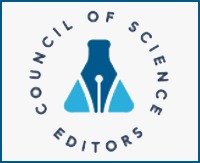Comparative outcomes of calcineurin inhibitor-free versus standard immunosuppression in kidney transplant recipients
DOI:
https://doi.org/10.65327/kidneys.v14i4.562Keywords:
kidney transplantation; calcineurin inhibitors; CNI-free immunosuppression; belatacept; graft survival; nephrotoxicity; acute rejection; immunosuppressive strategiesAbstract
End-stage renal disease patients with improved lifestyle checks will profit more from a kidney
transplant than from any other type of treatment. Toxic sites with increased rejection risk are often treated
with calcineurin inhibitors (CNI) such as tacrolimus and cyclosporine-drugs. They are very effective at
reducing the risk of rejection but extremely nephrotoxic and metabolically disruptive protecting the body
from unwanted consequences while providing immunological assistance with CNI-free approaches, such
as belatacept-based and mTOR inhibitors that have been designed to mitigate the risk. To assess the effect
of CNI-based versus CNI-free immunosuppression, a big comparative study in more than one hundred
transplant patients was conducted on a one-year follow-up study. The belatacept-treated CNI-free cohort
was compared to the other cohort receiving the control treatment in addition to portal mycophenolate.
Objectives for the study were post-surgical organ rejection, survival of the transplanted organ, multiple
infections, and all nuances of nephrotoxic and metabolic derangement. The results were fewer fragments
and a CNI-free cohort, with improved acute rejection control and reduced total nephrotoxicity balance
pumps. These findings conclude that CNI-free is superior to CNI administered.
Downloads
References
Hansen CM, Bachmann S, Su M, Budde K, Choi M. Calcineurin inhibitor associated nephrotoxicity in kidney transplantation —
a transplant nephrologist’s perspective. Acta Physiol. 2025;241(5).
doi: 10.1111/apha.70047.
Reddy S, Verma M. Enhancing patient comprehension through
simplified medical terminology: a literacy-based approach. Glob J
Med Terminol Res Inform. 2024;2(1):1-3.
Regele F, Haupenthal F, Doberer K, Görzer I, Kapps S, et al.
The kinetics of Torque Teno virus plasma load following calcineurin
inhibitor dose change in kidney transplant recipients. J Med Virol.
;96(3). doi: 10.1002/jmv.29554.
Marhoon HA, Shaker LM. LEACH-based approach using
first-order model for energy efficient routing in WSNs for mobile diabetes patient monitoring. J Wireless Mobile Netw Ubiquitous Comput
Dependable Appl. 2025;16(2):105-118. doi: 10.58346/jowua.2025.
i2.007.
Liefeldt L, Waiser J, Bachmann F, Budde K, Friedersdorff F,
et al. Long-term outcome after early mammalian target of rapamycin
inhibitor-based immunosuppression in kidney transplant recipients. J
Clin Med. 2024;13(15):4305. doi: 10.3390/jcm13154305.
Nithyalakshmi V, Sivakumar R, Sivaramakrishnan A. Automatic detection and classification of diabetes using artificial intelligence. Int Acad J Innov Res. 2021;8(1):1-5. doi: 10.9756/iajir/v8i1/
iajir0801.
Sanada S, Katano S, Asami K, et al. Correlation between
dietary salt intake and renal outcomes related to calcineurin inhibitor nephrotoxicity in kidney transplant recipients. Sci Rep.
;15:26466. doi: 10.1038/s41598-025-11292-4.
Dewangan T, Singh C. A nano-zinc oxide-based drug delivery
system and its biomedical applications. Nat Eng Sci. 2024;9(3):193-
doi: 10.28978/nesciences.1606636.
Noble J, Leon J, Del Bello A, Anglicheau D, Blancho G, et al.
Belatacept in kidney transplantation: reflecting on the past, shaping
the future. Transpl Int. 2025;38. doi: 10.3389/ti.2025.14412.
Papalou A. Proposed information system towards computerized technological application — recommendation for the acquisition, implementation, and support of a health information system. Int
J Commun Comput Technol. 2023;8(2):1-4.
Bollano E, Andreassen AK, Eiskjaer H, Gustafsson F,
Rådegran G, et al. Long-term follow-up of the randomized, prospective Scandinavian heart transplant everolimus de novo study
with early calcineurin inhibitors avoidance (SCHEDULE) trial. J
Heart Lung Transplant. 2024;43(12):1948-1959. doi: 10.1016/j.
healun.2024.07.002.
Kim YJ, Lee SW, Kim MS, et al. Anuria after kidney transplantation diagnosed as early recurrence of focal segmental glomerulosclerosis combined with acute calcineurin inhibitor nephrotoxicity:
a case report and literature review. BMC Nephrol. 2024;25:123. doi:
1186/s12882-024-03524-y.
Jin B, Lu Z, Cheng C, Pei Y, Chen L, et al. Factors associated with chronic calcineurin inhibitor nephrotoxicity in children with minimal-change disease. Ren Fail. 2025;47(1). doi:
1080/0886022x.2025.2474743.
Ji Y, Sun L, Fei S, et al. Long-term outcomes in rapamycin
on renal allograft function: a 30-year follow-up from a single-center
experience. BMC Nephrol. 2024;25:311. doi: 10.1186/s12882-024-
-8.
Tang Y, Zhu J, Mao X, Cai Z. Impact of rapamycin on
delayed graft function in kidney transplant recipients: a metaanalysis. Ren Fail. 2025;47(1). doi: 10.1080/0886022x.2025.
Khan MA, Hanna A, Sridhara S, Chaudhari H, Me HM,
et al. Maintenance immunosuppression in kidney transplantation:
a review of the current status and future directions. J Clin Med.
;14(6):1821. doi: 10.3390/jcm14061821.
Huelsboemer L, Boroumand S, Kochen A, Dony A, Moscarelli J, et al. Immunosuppressive strategies in face and hand transplantation: a comprehensive systematic review of current therapy
regimens and outcomes. Front Transplant. 2024;3. doi: 10.3389/frtra.2024.1366243.
Russo MW, Wheless W, Vrochides D. Management of
long-term complications from immunosuppression. Liver Transpl.
;30(6):647-658. doi: 10.1097/lvt.0000000000000341.
Lee JG. How to prevent chronic kidney disease after liver transplantation? Ann Liver Transplant. 2024;4(1):1-9. doi:
52604/alt.24.0005.
Luft FC. Calcineurin inhibition, cardiovascular consequences, vascular resistance, and potential responses. Acta Physiol.
;240(3). doi: 10.1111/apha.14084.
Hussaini SA, Waziri B, Dickens C, Duarte R. Pharmacogenetics of calcineurin inhibitors in kidney transplant recipients: the
African gap. A narrative review. Pharmacogenomics. 2024;25(7):329-
doi: 10.1080/14622416.2024.2370761.
Dash K, Mishra M. The tradeoff between the efficacy of
calcineurin inhibitors: prevention of allograft rejection vs. posttransplant renal and cardiovascular complications. Crit Rev Toxicol.
;55(1):63-79. doi: 10.1080/10408444.2024.2433631.
Johnson AC, Zhang J, Karadkhele G, Gragert L, Hertzberg V,
Larsen CP. Belatacept with time-limited tacrolimus coimmunosuppression modifies the 3-year risk of eplet mismatch in kidney transplantation.
Am J Transplant. 2023;24(2):260-270. doi: 10.1016/j.ajt.2023.09.011.
Nageh A, Ahmed HI, Afify H, Balah A. Calcineurin inhibitors-induced nephrotoxicity: molecular mechanisms and mitigation strategies. Azhar Int J Pharm Med Sci. 2025;5(2):1-11. doi:
21608/aijpms.2025.250432.1241.
Chavarot N, Cabezas L, Kaminski H, Lazareth H, Try M,
et al. Similar efficacy in belatacept-converted kidney transplant recipients with steroid-avoiding regimen. Kidney Int Rep. 2024;10(3):803-
doi: 10.1016/j.ekir.2024.12.019.
Downloads
Published
How to Cite
Issue
Section
License
Copyright (c) 2025 Chiranjeev Singh, Prachi Gurudiwan

This work is licensed under a Creative Commons Attribution 4.0 International License.

 ISSN
ISSN  ISSN
ISSN 


























